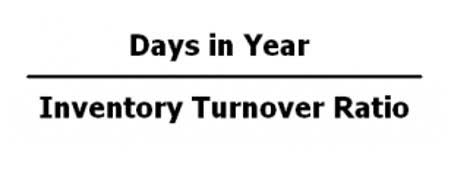
Recall that the accounts receivablesubsidiary ledger is a record of each customer’s account. At the end of the period, we would post the totals of $7,650 credit to cash, the $7,500 debit to accounts payable, and the $150 credit to merchandise inventory. The DR (debit) Other column would be handled a little differently as you need to look to the account column to find out where these individual amounts should be posted.
- For example, a $100 sale with $10 additional sales tax collected would be recorded as a debit to Accounts Receivable for $110, a credit to Sales for $100 and a credit to Sales Tax Payable for $10.
- Each day, individual purchases should be posted to the vendor’s account in the accounts payable subsidiary ledger.
- The multi-column journal should always have an ‘other’ column to record amounts which do not fit into any of the main categories.
- And the accounts receivable subsidiary ledger for Baker Co.would also show the payment had been posted (Figure7.22).
- As inventory gets low, the company would order new LED lights from the suppliers.
Example of the Sales Journal Entry
The transactions would be posted in chronological order in the sales journal. As you can see, the first transaction is posted to Baker Co., the second one to Alpha Co., then Tau Inc., and then another to Baker Co. On the date each transaction is posted in the sales journal, the appropriate information would be posted in the subsidiary ledger for each of the customers. As an example, on January 3, amounts related to invoices and are posted to Baker’s and Alpha’s accounts, respectively, in the appropriate subsidiary ledger.

Accounting for Credit And Cash Purchase Transactions (Explained With Journal Entries)

The Accounts Receivablecontrol account in the general ledger is the total of all of theamounts customers owed the company. Also at the end of the month,the total debit in the cost of goods sold column and the totalcredit to the merchandise inventory column would be posted to theirrespective general ledger accounts. A sales journal is a journal entry whose function is to record types of credit sales transactions. The seller typically records the sale as a debit to Accounts Receivable or Accounts Receivable and a credit account.
Do you already work with a financial advisor?
Paid the $1,450 owed, there would be a debit to Cash for $1,450and a credit to Accounts Receivable. A notation would be made inthe reference column to indicate the payment had been posted toBaker Co.’s accounts receivable subsidiary ledger. After BakerCo.’s payment, the cash receipts journal would appear as inFigure 7.21. When the customer pays the amount owed, (generally using a check), bookkeepers use another shortcut to record its receipt. The cash receipts journal is used to record all receipts of cash (recorded by a debit to Cash). In the preceding example, if Baker Co. paid the $1,450 owed, there would be a debit to Cash for $1,450 and a credit to Accounts Receivable.
- Under the periodic inventory method, the July 6 shipping costs would go to a Transportation In account and the July 25 discount would go to Purchases Discounts.
- In certain instances (see below) an entry may need posting in both the subsidiary ledger and the general ledger and therefore a reference needs to included for both ledgers.
- You use accounting entries to show that your customer paid you money and your revenue increased.
- A sales journal, also known as a sales daybook or sales book, is a specialized accounting journal used to record all credit sales transactions of a business.
Create a Free Account and Ask Any Financial Question
At the end of the month, the amount column in the journal is totaled, and this amount is posted as a debit in the general ledger purchases account. It is also posted as a credit in the general ledger accounts payable account. At the end of the month, sales journal we total the Cash column in the cashreceipts journal and debit the Cash account in the general ledgerfor the total. Altogether, the three individual accounts owe the company$2,775, which is the amount shown in the Accounts Receivablecontrol account.
If we ordered inventory from Jones Mfg. (account number 789) using purchase order #123 and received the bill for $250, this would be recorded in the purchases journal as shown in Figure 7.28. Accounting information systems were paper based until the introduction of the computer, so special journals were widely used. When accountants used a paper system, they had to write the same number in multiple places and thus could make a mistake. Now that most businesses use digital technology, the step of posting to journals is performed by the accounting software. The transactions themselves end up on transaction files rather than in paper journals, but companies still print or make available on the screen something that closely resembles the journals.

Recording entries in sales journal
Note that the information for both the cash receipts journal and the cash disbursements journal are recorded in the general ledger Cash account. At the end of each reporting period, the sum total of the unposted debits and credits in a sales journal is posted to the general ledger. If anyone wants to research these posted balances listed in the general ledger, they refer back to the sales journal, and may use the invoice number listed in the sales journal to access a copy of the invoice. The sales journal only stores receivables; this means that sales made in cash are not recorded in it. A sale made in cash would instead be recorded in the cash receipts journal.
- For example, if we overpaid our electric bill, we could get a refund check in the mail.
- Under the periodic inventory method, the credit would be to Purchase Returns and Allowances.
- Accounting information systems were paper based until the introduction of the computer, so special journals were widely used.
- These transactions are entered in the general journal, also known as the journal proper.
- At the end of each accounting period (usually monthly), the sales journal double entry is used to update the general ledger accounts.
- In the purchases journal, using the perpetual method will require we debit Inventory instead of Purchases.
- The six main parts of a sales journal are Data, account Debited, Invoice number, post Reference, Accounts Receivables, and cost of goods sold.
Cash Disbursement Journal



